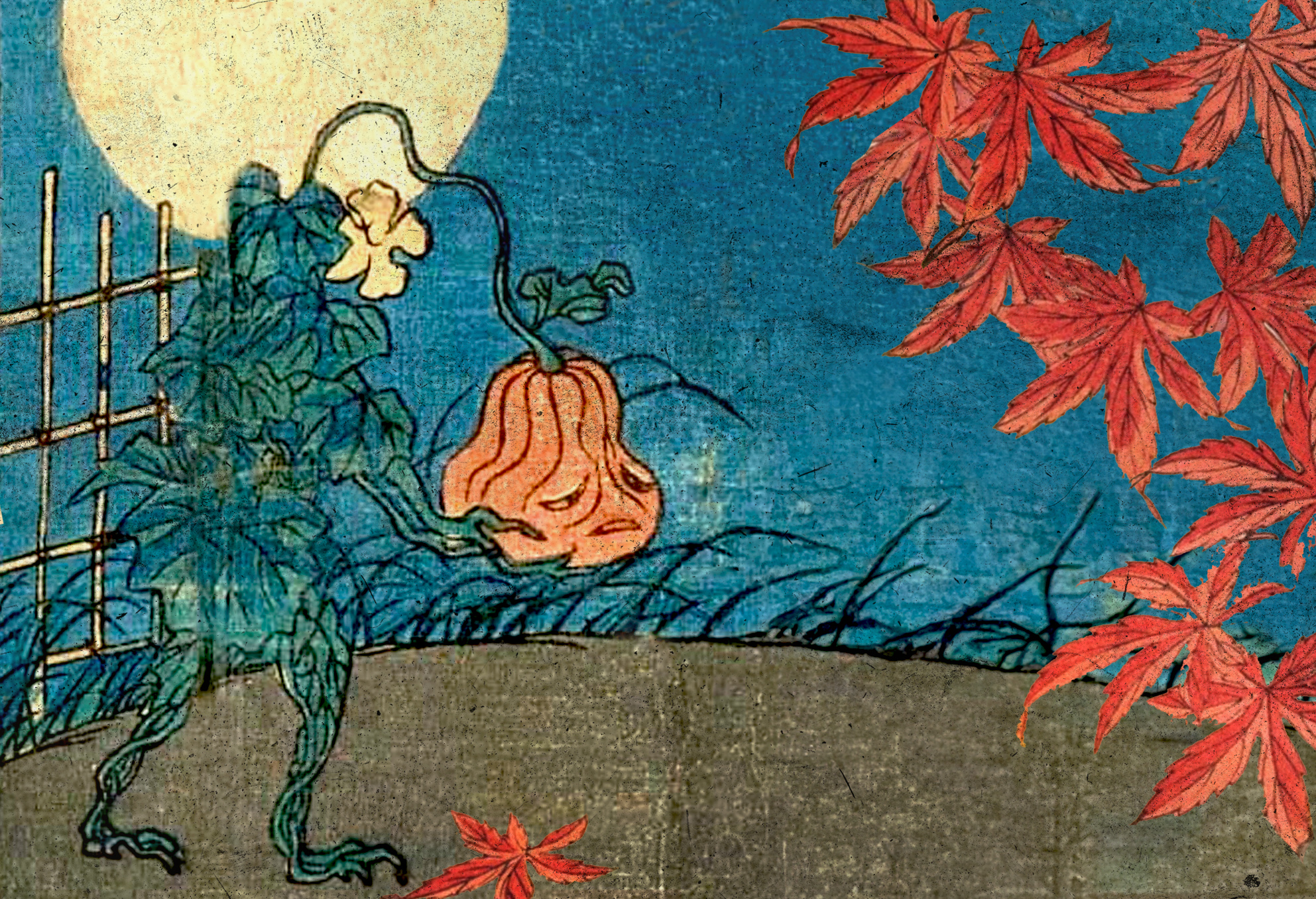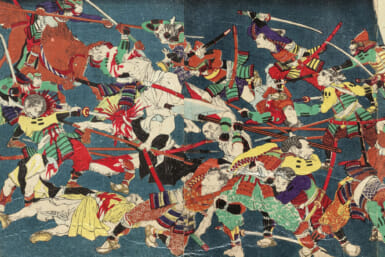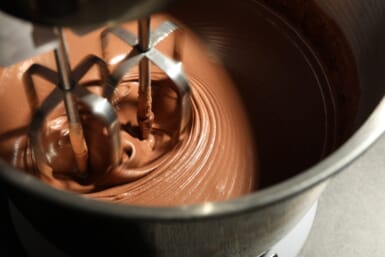Autumn is a peculiar season — it’s a transitional period between the hottest, most active time of the year and the cold dead of winter. Not really one or the other, it symbolizes the idea of change and the sense that anything is possible — even encounters with these five Japanese spirits.
1. Sunamura no Onryo: The Haunted Pumpkin
Sunamura used to be a quiet village known for its pumpkin production during the Edo period. Quiet, that is, except for the fall, when the area was supposedly haunted by the Sunamura no Onryo, the “Vengeful Ghost of Sunamura.” This spirit allegedly terrified people with its freshly ripened pumpkin head and limbs made from twisted vines and leaves. What stands out is the vivid description of the apparition’s bright orange noggin, a striking detail given that most Japanese pumpkin varieties are dark green and even black on the outside. To really hammer in the weirdly Halloween-esque characteristics of the spirit, the Sunamura no Onryo apparently was said to carry its “head” in its own hands, evoking the image of the Headless Horseman from Washington Irving’s The Legend of Sleepy Hollow.
The village of Sunamura no longer exists but it used to occupy the lands that today make up Koto city in Tokyo. If you want to get scared out of your gourd by a living pumpkin, head over there before winter starts.
2. Bake Icho no Sei: The Ginkgo Monk
Nothing captures the dichotomy of autumn quite like the ginkgo tree. Beautiful when its leaves turn an otherworldly golden color in the fall, the tree is also the source of fruit that, when smashed open on the sidewalk, emit a stench best described as vomit marinated in a backed-up toilet. The mythological guardians of ginkgo trees reflect this duality. Known as Bake Icho no Sei, they are described as tall spirits with yellow skin, clad in black monk robes while striking a gong. While they don’t exhibit overtly malevolent behavior towards humans, their presence always carries an unspoken sense of threat.
The association between ginkgo guardians and monks stems from tradition. Ginkgo trees have long been planted at shrines and temples, where they are revered for their beauty and fire-resistant properties. Planting one in a private garden, however, was believed to bring death and misfortune on the offending household — and probably not just from the smell.
3. Azukibabaa: The Cannibalistic Bean Witch
The one good thing you can say about the Azukibabaa (Red Bean Hag) is that she keeps her promises. Unfortunately, she usually promises to eat you if she catches you nearby. This eerie figure is said to appear on autumn evenings in northeastern Japan, washing azuki beans in rivers, lakes and ponds while singing in a horribly raspy voice that she can have either the legumes or a passing human for dinner, so it’s best to keep your distance. Besides a hideous appearance and the sing-song threats, the bean witch can also be recognized by her white kimono, the same kind worn by the deceased.
Some folklorists identify the spirit as a way of scaring children away from bodies of water during twilight hours in autumn when mist may obscure visibility and lead to accidental drownings. Or maybe that’s just the excuse that the Azukibabaa came up with to keep people from investigating the disappearances of all the kids she’s eaten.
4. Byakko: The Heavenly White Tiger
One of the “Four Heavenly Beasts,” Byakko the White Tiger is a god of cardinal directions together with the Azure Dragon, the Vermilion Bird and the Black Tortoise. In Chinese mythology, feng shui and ancient astrology, it guards the West and is associated with the element of metal, the wind, justice and autumn when its powers are said to be at their peak.
Archeological evidence suggests that the Byakko faith might have arrived in Japan as early as the third century, during a time when Japanese religion was still a blend of mainland Asian influences and native Japanese beliefs. With the introduction of Buddhism, Byakko eventually lost its godhood, but still remains a powerful and auspicious symbol as the belief in animals turning white and gaining magical abilities after living for centuries still persist in Japanese mythology.
5. Aosagibi: The Blue-Fireball Bird
Not all animals in Japanese mythology turn white after reaching a certain age. Some, like the gray heron, transform in other ways. These herons develop armor-like scales on their breasts and join flocks of immortal spirit birds that like to hang out deep in the woods, making weird noises and spitting out blue fireballs. Appearing almost exclusively on autumn nights, the Aosagibi’s dragon breath doesn’t actually burn and poses no risk to the forest.
Wary of humans, these spirits tend to keep to themselves, content with flying around with their friends and shooting off cold fireworks across the night sky. In conclusion: Japanese herons have an afterlife and it’s way better than anything humans ever came up with.









